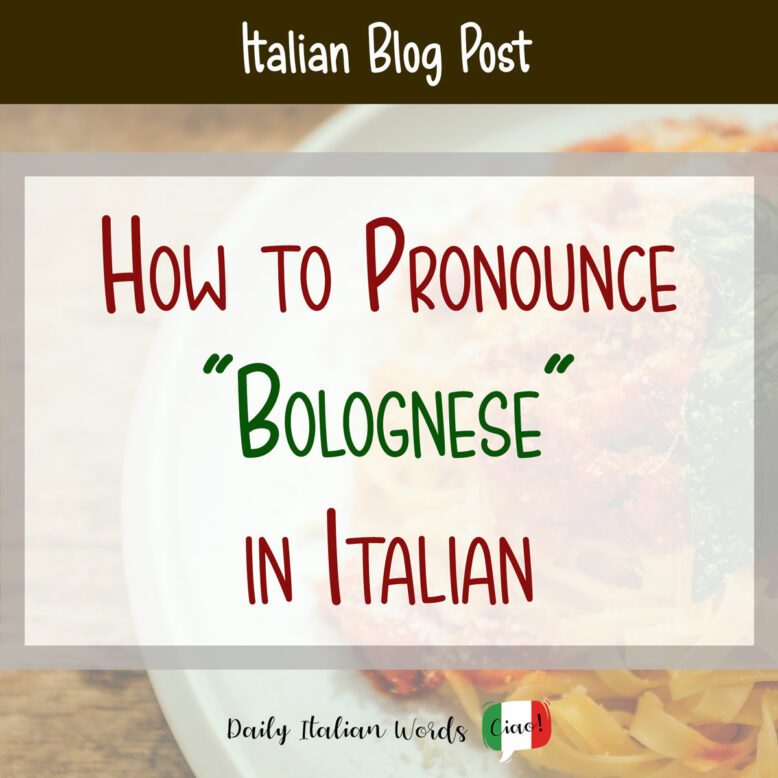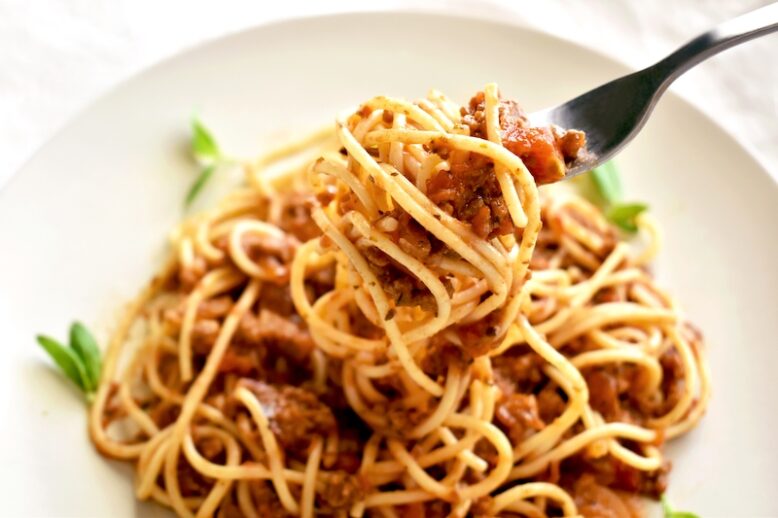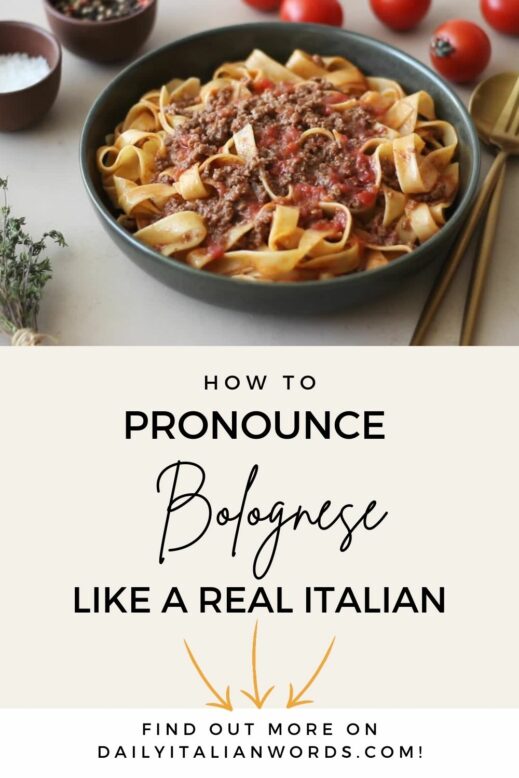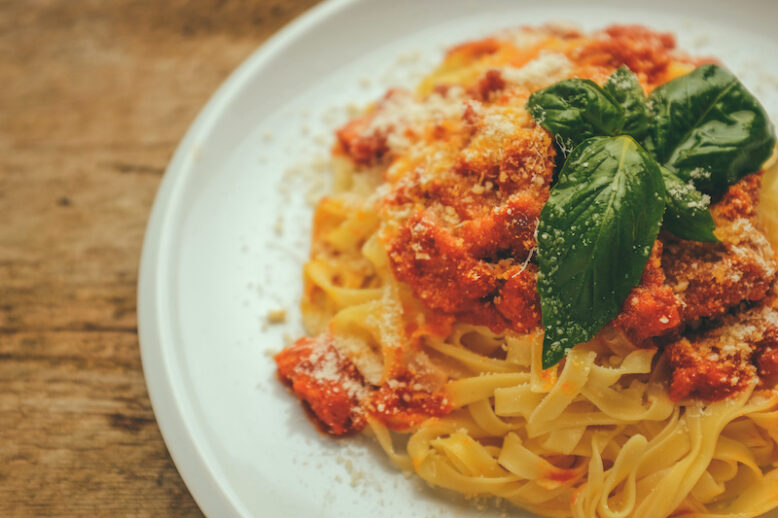If you live outside of Italy – specifically in an English-speaking country such as America or the UK – you will undoubtably be familiar with Spaghetti Bolognese, that comforting pasta dish covered in flavoursome tomato sauce, delicious minced beaf, garlic, wine and herbs. Along with pizza, it is one of those classic dishes many perceive as quintessentially Italian.
This is why many non-Italians are shocked to learn that Spaghetti Bolognese isn’t an authentic Italian dish at all. Although its actual origins are unclear, it is believed to have evolved in the United States in the early 20th century, following the mass emigration of southern Italians, or in immigrant-run restaurants in post-war Britain.

Origin of the word “bolognese”:
Bolognese in Italian is an adjective that literally means “from Bologna”. It can be used to refer to a person or thing that originates from the city of Bologna.
- Marco è bolognese. = Marco is from Bologna.
- Questo piatto è tipicamente bolognese. = This is a typical Bolognese dish.
Although Spaghetti Bolognese isn’t an Italian creation, it does bear some resemblance to the Bolognese dish ragù alla bolognese or more simply, ragù. Traditionally the ragù sauce is paired with tagliatelle pasta, but it can also be eaten with other pasta shapes, such as pappardelle, fettuccine, rigatoni and penne.
Interestingly, it is thought that Spaghetti Bolognese more closely resembles ragù alla napoletana, which requires a greater quantity of tomato-based sauce compared to its Bolognese cousin.

English speakers pronounce bolognese as << BO-LO-NAIZ >>, ignoring the word-final E completely. Here is how you should pronounce it in Italian:
The authentic Italian pronunciation of bolognese differs from the English in two main ways.
First is the pronunciation of gn, which isn’t an n sound but rather an ɲ (a palatal nasal in linguistic terminology). Because this sound doesn’t exist in English, it can be quite hard to master at first.
Second is the word-final e, which isn’t a silent letter in Italian. Be aware that the Italian e isn’t as open as the English e. Rather, it is more similar to the a sound in words like “bait” “sail” and “chaotic”.
<< BOLOGNESE >>
/bɒləˈnjeɪz/
Hai mai mangiato il ragù alla bolognese?
Have you ever eaten ragù alla bolognese?

How to make ‘ragù alla bolognese’
Start by sautéing pancetta until it crisps and renders its fat which the soffritto (onion, carrot and celery) and ground beef soften and brown in, soaking up all of that rich flavor. White wine (ideally a dry Italian wine) and canned crushed tomatoes (ideally San Marzano) are stirred in and the magic happens as the sauce simmers low and slow. A splash of cream is stirred in just before serving. And each bowl is finished with a generous sprinkle of Parmigiana Reggiano and chopped Italian parsley. Buon appetito!
Straight from a cooking class in Bologna, this authentic recipe for Ragù alla Bolognese can be found here.

Heather Broster is a graduate with honours in linguistics from the University of Western Ontario. She is an aspiring polyglot, proficient in English and Italian, as well as Japanese, Welsh, and French to varying degrees of fluency. Originally from Toronto, Heather has resided in various countries, notably Italy for a period of six years. Her primary focus lies in the fields of language acquisition, education, and bilingual instruction.


